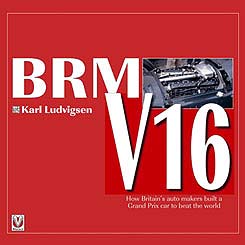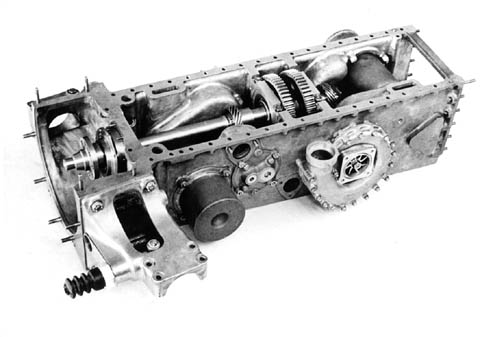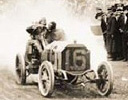Book Review
by Russell Jaslow
BRM V16 - How Britain's Auto Makers Built A Grand Prix Car To Beat The World
by Karl Ludvigsen
Veloce Publishing
ISBN: 1845840372. List Price: $34.95.
  Over ten years ago, I was involved as a part owner in a race car manufacturing venture. We designed and built a Formula Ford 2000 car with the initial intent to perfect and market it by running it in the pro series, then called the USAC Formula Ford 2000 Championship Series, followed by producing and selling the car. The key lesson I learned from that experience is never go into that business unless you are properly funded. Over ten years ago, I was involved as a part owner in a race car manufacturing venture. We designed and built a Formula Ford 2000 car with the initial intent to perfect and market it by running it in the pro series, then called the USAC Formula Ford 2000 Championship Series, followed by producing and selling the car. The key lesson I learned from that experience is never go into that business unless you are properly funded.
It doesn't matter how enthusiastic and hard working the people involved are. We all were, often working late nights for no pay. It doesn't matter how good of a driver you have. We did, getting Bobby Carville, who previously beat Jimmy Vasser for the Canadian Formula Ford 2000 championship, at the time the top F2000 series in North America. It doesn't matter how good and unique the design and production of the car was. It was, as it finished third in it's pro and racing debut at Mid-Ohio after just three days worth of testing.
If the effort does not have the proper resources -- people, facilities, and most importantly of all, money -- it is doomed to fail. Or, at the very best, make a brief mark and then fade away. That thought kept crossing my mind when I read BRM V16.
As World War II came to an end, the British were eager to prove themselves in the Grand Prix racing arena. Flamboyant Raymond Mays, who was behind the pre-war ERA effort, pushed for the creation of a British Grand Prix car. He knew plenty of the right people and combined with a knack for convincing these important people, Mays was able to ride a wave of postwar patriotism to raise the support for such a project. The support came in the way of money, parts, expertise, and people. Unfortunately, it never was quite enough to make this effort a complete success.
At the heart of this project was the decision to go with a V16 engine design. It would be this overly complicated engine that would dominate and ultimately foil the BRM effort, causing chassis and suspension design to lag behind. However, it is this engine that put the romanticism into the project, an engine that first topped 10,000 rpm in F1, and sounded like nothing heard before. "You should have heard the way it buzzed along!" Juan Fangio said after test driving a BRM.

Ken Wharton drives the BRM V16 at Goodwood in a race on April 6, 1953.
Karl Ludvigsen, who is no stranger to writing books about racing manufacturers and engines (Gurney's Eagles being the most well known one for American racing fans), had a special reason to write about the BRM V16 -- as a young American, he joined the BRM fan club.
Ludvigsen captures the highs and lows of the project not shying away from the problems the venture suffered while also presenting the successes in a manner where you can cheer along.
The book started out slow for me. The first chapter is devoted to Raymond Mays background and the effort to get the project off the ground. The second chapter is devoted to the technical details in the design and building of the engine. For my personal tastes, this went into too much detail. However, if you are one who savors the minute details of automotive technology, you will completely disagree with me. And, the numerous cross-section drawings are a sight to behold.

One of many wonderful technical photos in the book, viewed from its clutch end, this is the magnesium pump displaying the driveshaft from crankshaft to clutch as well as the water pump, oil pump, and oil filter on the right side.
|
The book picks up in chapter three when the car hits the track. Or rather, when the BRM team attempts multiple times to get the car to the track. Seemingly, it was one excuse and broken promise after another to the point where a no-show was more common than an appearance. It makes the great boycott at the 2005 U.S. Grand Prix seem like child's play. However, it makes for fascinating reading similar to the great Greek tragedies.
If you have ever wondered about the complete story beyond the romanticism of the BRM V16, this book gives it to you. It will leave you with a what-might-have-been feeling as any success the car had was too little, too late.
When you are done, you will realize the same thing I learned a number of years ago. Do not start a racing project until you are absolutely sure you at least have the resources in place to be successful.
Copyright © 2007 by . All Rights Reserved.
|
|
|
|



